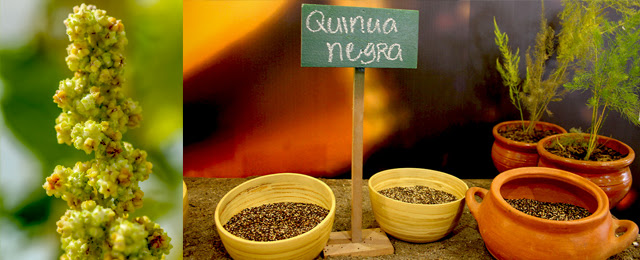

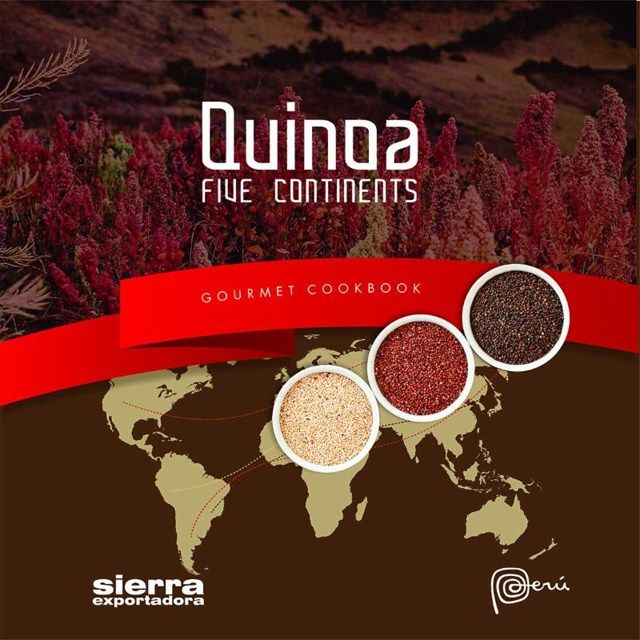
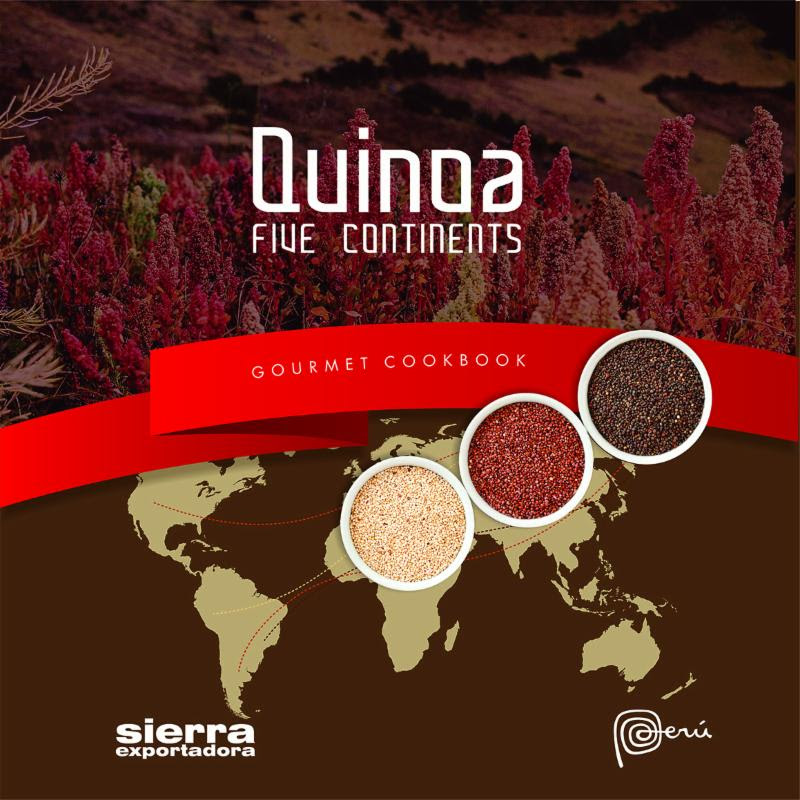
In the event, the gourmet book «Quinoa Five Continents» will be presented made by Sierra Exportadora which last June 9 won worldwide recognition to take second place in the category ‘Best Foreign-International Cuisine’ in the prestigiousGourmand World Cookbook Awards 2015, award ceremony known as the Oscar of the gastronomía’ books in a ceremony held in the city of Yantái, Shandong, China.
31 recipes created by undeniable stars of the international culinary firmament among them the Spanish Joan Roca, Pedro Subijana, Juan Mari Arzak and Martin Berasategui; the Peruvian Virgilio Martínez, Flavio Solórzano and Javier Flórez as well as upcoming chefs from France, Mexico, Brazil, Colombia, Japan, Cameroon and other countries, make this award-winning gourmet cookbook of unmissable content, developed as a tribute to small Peruvian farmers and the 7,000 years of history of the quinoa.
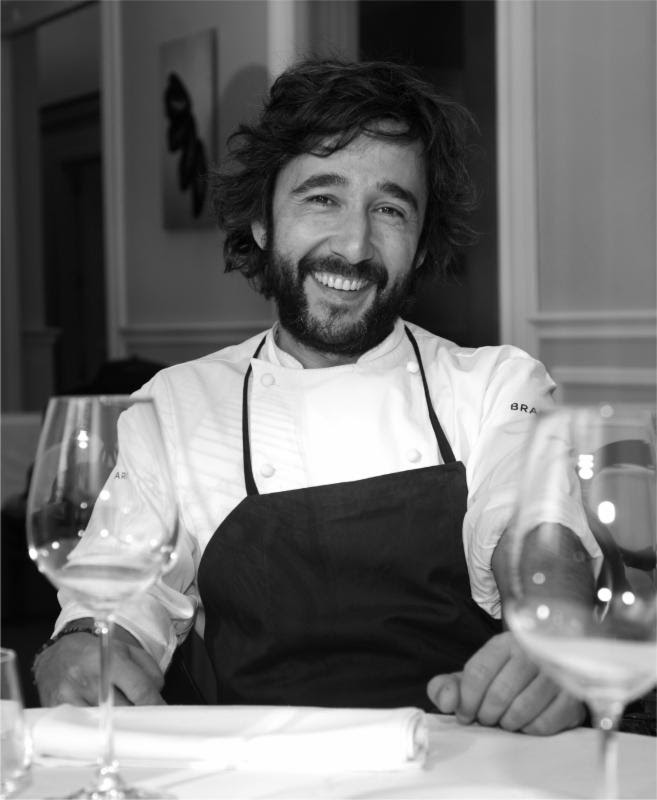
Awarded with two Michelin stars and two Repsol suns for his eminent work in El Club Allard, one of the most renowned restaurants of Madrid, where he taught at the kitchen for more than ten years, the Spanish chef Diego Guerrero will participate in ‘Quinoa, a gastronomic legacy for the five continents’ with his usual mix of humility and self-assurance, virtues that have made him a star of the Spanish television. ‘The Good Life Embassy’ was the tour that took him long ago by Paris, Moscow, London, Berlin, Chicago, Sao Paulo, Mexico and Shanghai, cities where he taught his secrets through showcookings, conferences and demonstrations.
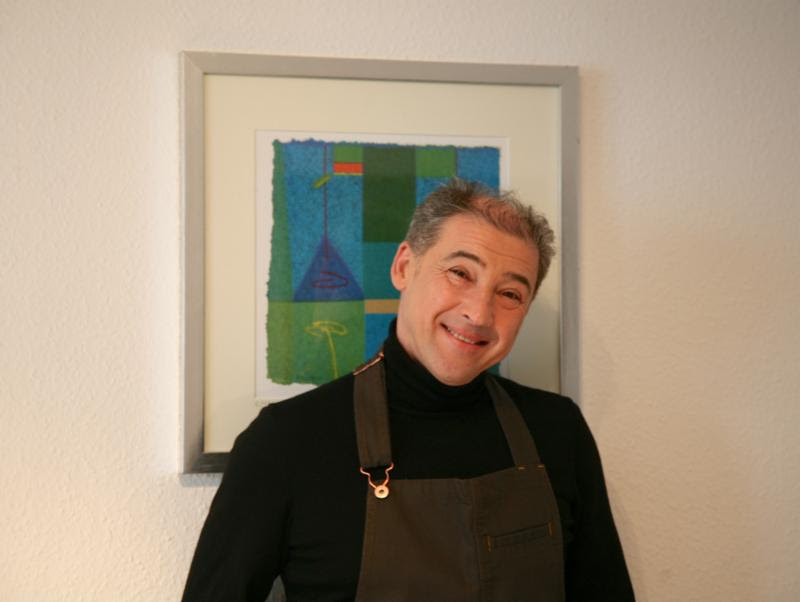
He will also be in «Quinoa, a gastronomic legacy for the five continents» the famed chef and Spanish gourmet Juan Alberto Fortes, who enjoys a high international prestige and recognition for his continued participation in food festivals in Spain, Germany and other nations of the Union European, along with the best chefs in the world. Fortes is an author of several publications specialized in gastronomy and art, with a strong emphasis on Spanish cuisine and the excellence of its products. For the gourmet book «Quinoa Five Continents» published by Sierra Exportadora, he prepared a creation which he called ‘Quinoa-Knöpfle-suppe’ -filling broth beef with quenelles of quinoa and mature cheese of goat.
Among other delicacies, Alberto Fortes will prepare for the meeting in New York the plate ‘Pachamama’ an expression Quechua that means «Mother Tierra’-, creating fine gourmet food that will combine ancestral food from Peru with important contributions from the Old World. A dish that will have as protagonist red quinoa and which dwell in healthy living, native potatoes in the Peruvian Andes, asparagus and pisco, Peru flag product.
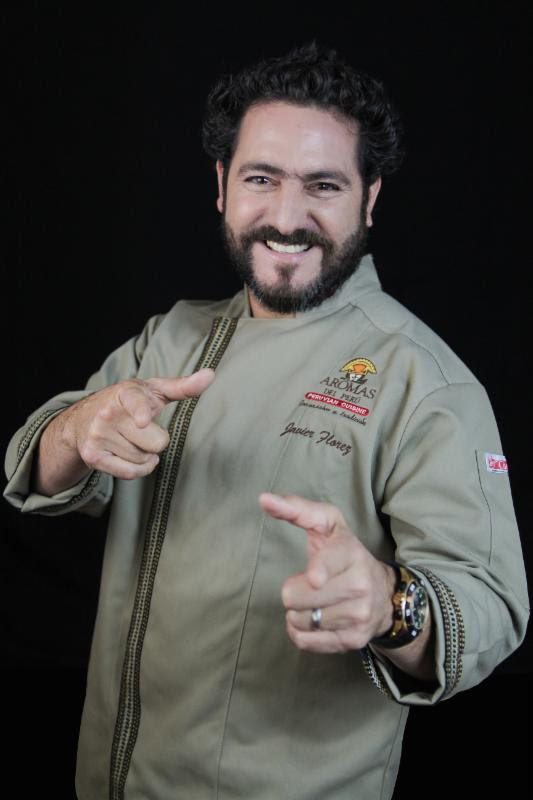
Chef Javier Florez will represent Peru at this international event, a benchmark of Peruvian cuisine in the United States, owner of the prestigious restaurant chain «Aromas del Peru», with locations in different cities of the state of Florida. Diffuser of typical food from the coast, highlands and jungle from Peru, Florez is recognized in Miami and other US cities for quality of his ceviches and seafood, Creole food in traditional style with 100% Peruvian ingredients; and for his «Peruvian wok» perfect fusion of Peruvian and Cantonese food.
He has received numerous awards in his career, including the «Award for the best causa» in Taste of Peru 2010 with his creation «Causa de lomo saltado» and the «Award for the best ceviche» in Taste of Peru in 2011. In the Peruvian Culinary Awards organized in 2014 in Washington, he received the «Cuchillo de Oro» award as the best Peruvian chef in the United States. He has also participated in Peru Gourmet and Miami Food & Wine Festival; and «Quinoa, the golden grain of the Incas» (2014), workshop conducted in Istanbul, Turkey, to promote the consumption of Andean grains in Central Asia and the Middle East.
While in different countries has increased exponentially quinoa production, recent government projections of Peru given in last June through the Ministry of Agriculture and irrigation confirm that the country will continue to be, at the end of 2015, the undisputed world leader in the production and export of quinoa, sacred crop whose name means ‘mother grain’ in the Quechua language, and together with amaranth (known as ‘kiwicha’ by ancient Peruvians), was one of the staple foods of the aboriginal cultures of America, thousands of years ago.
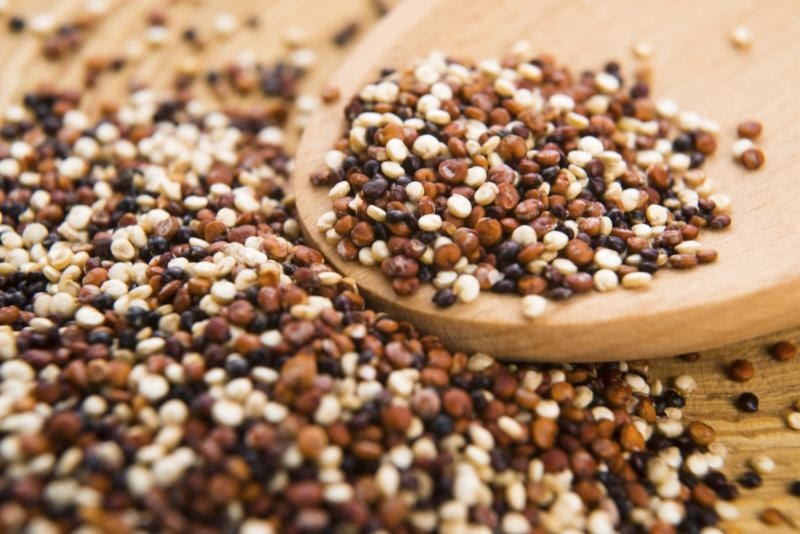
Indeed, official estimates indicate that production of quinoa in Peru will increase to 15% at the end of this year, exceeding 114.300 tons in 2014 and possibly reaching up to 131.145 tons at the end of 2015. As recalled, in 2012 and 2013, Peru produced 44,200 and 52,300 tons of quinoa respectively per year; figures reveal the great momentum that has had the cultivation of quinoa in Peru from 2012 to the present.
These figures in blue are the result of a well planned national strategy that promotes and encourages family agriculture in the country. Peru, for example, is the only nation in Latin America and possibly this is the only one in the world celebrating the ‘Month of Agriculture’ (in June) with a series ofactivities and also in its official calendar, commemorates ‘National Day of Andean Grains (June 30), by way of claiming this ancient culture that promotes national agro-export and contributes to the eradication of poverty in the country.
In the same vein, the Government of Peru has approved on June 22 the ‘National Strategy for Family Agriculture 2015-2021’, which involved ten ministries of the Peruvian state, these are Foreign Trade and Tourism, Foreign Affairs, Development and Social Inclusion, Culture, Environment, Production, Education, Women and Vulnerable Populations and Health . The government seeks to ensure, among other objectives, food security in the country through the sustainable production of adequate food, respecting the cultural traditions of each population.
Organizers of the event reported that Peru maintains a solid lead over other Andean countries in research linked to this ancestral cultivation. They announced, in this sense, the future implementation of the Centre of Research and Development in Agricultural Science and Technology in Peru, with the support of China, the implementation of which allow you to run a comprehensive program of binational cooperation for research and conservation of the Peruvian agricultural biodiversity with special emphasis on quinoa and other Andean grains such as amaranth and kañiwa, also pre-Columbian origin.
They stressed that the National Agricultural Research Institute (INIA) of Peru has achieved after nearly two decades of exhaustive research making available to farmers in the Peruvian highlands a wide variety of genetically improved quinoa of extraordinary nutritional qualities, higher performance in field, drought resistant and tolerant to mildew (main disease affecting this crop), which constitutes a huge step forward for sustainable development of agriculture in Peru and world food security.
On the other hand, they indicated that Puno, the Peruvian region leader in production of organic and conventional quinoa has been chosen to host the Sixth World Congress of Quinoa to be held in 2017 -after beating other candidate cities of Bolivia, Chile, Argentina, Ecuador and Colombia; while Ayacucho, the second Peruvian region leader in the production of so-called ‘golden grain of the Incas’, is ready to create the Scientific Institute of Quinoa, through a strategic partnership between the Regional Government of Ayacucho and Concytec,state agency that regulates, promotes, monitors and evaluates the actions of the Peruvian State in science, technology and innovation, and encourages its development.
Contact: Heidi Castrillon (Conference Chairperson)
More info: info@bizusaperu.com
Phone: 201-875-0220
